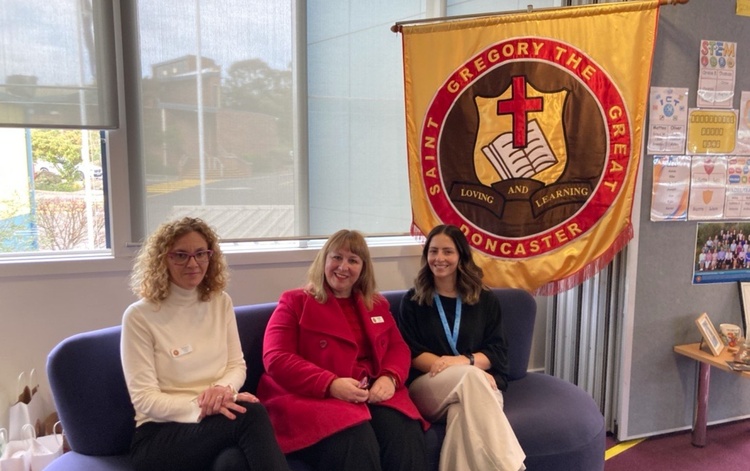MELBOURNE – “When I arrived … the students were attending a weekly Italian lesson of forty minutes,” explained Michelle Verna, the principal of St Gregory the Great Primary School in Doncaster for the past seven years.
“Having conducted extensive research in the linguistic field, I knew this wasn’t the best approach.”
Verna pushed the school to transition from the traditional approach of teaching a language during a weekly lesson to the ‘Teachers as Co-Learners’ (TCL) method, where teachers dedicate time to the language each day, learning alongside their students.
“When entering a new environment, you can’t be disrespectful to the teachers who are doing their best,” Verna said.
“To change the culture within the school, I needed to work with the staff, to educate them on effective language teaching practices.”
With this new principal began a process of discussion and growth among staff members. Learning from the research, they began implementing the necessary changes required to engage students effectively and help them achieve the goal of acquiring a second language.
“About three years ago, I was invited by MACS – Melbourne Archdiocese Catholic Schools – to join the TCL program, which I had heard of but didn’t know about in detail,” Verna explained.
“At the time, our school was trying to change its approach … [so] we asked the school community if they wanted to continue teaching Italian.
“Once we received a positive response, we created a dedicated language working group.”
Over time, the group grew to include other teachers, some of Italian origin and others with no prior knowledge of the language who were able to empathise with students lacking language skills.
As expected, the beginning was slow: videos were shown, and certain words were accompanied by gestures. Gradually, Verna and the teachers “noticed that not only were students interested in learning the language, but they wanted to communicate”.
The obvious power of the method even convinced the most sceptical teachers, leading to Italian becoming integrated into daily school life. And the bella lingua wasn’t just limited to the classroom – it could even be heard via announcements over the PA system.
“It was an interesting process because my colleagues often worried about making mistakes,” shared Verna.
“But I repeatedly told them it was important to make mistakes because it helped the children understand that it was normal to make them.”
In order to help Italian teacher Renee Scarmozzino, Verna began to consider hiring an Italian language assistant.
Auspiciously, Drusilla Galelli had submitted her application for a Learning Support Officer position.
“[Galelli is] a Milanese who had lived abroad for many years, with whom the connection was immediate,” Verna recalled.
With the help of Galelli and Cathy O’Brien, the director of learning and teaching, the current system, which involves teachers dedicating at least fifteen minutes a day to Italian, was established.
Teachers can practice new words and phrases “thanks to Renee, who provides presentations and the necessary materials to help teachers and not burden them with extra work,” O’Brien highlighted.
Additionally, during staff meetings, at least ten minutes are always dedicated to TCL practice, allowing teachers to revisit the pronunciation of certain words and discuss which songs or games to incorporate in the classroom to engage students.
Initially and as mentioned previously in this article, words were accompanied by gestures to help kids memorise them. But, over time and thanks to specific research, it became known that hand movements, rather than aiding learning, made language learning more complicated.
“We then established a rule that all children, from Prep to Year 6, should focus on a weekly number of words or phrases ranging from five to eight,” explained Renee Scarmozzino.
Through daily practice and the use of small games and activities, children can remember and communicate more effectively in Italian.
“It’s wonderful to see every teacher dedicating time to Italian,” said Galelli, who helps colleagues with pronunciation, which is a challenge for many.
Students have become so accustomed to hearing certain phrases repeated that they now use them spontaneously in class or even with each other.
This speaks to the importance of students understanding that Italian is a communication tool, not merely something related to cuisine, festivals or a flag.
The language became significant to them because now “it has a purpose,” Scarmozzino noted.
The success of this passionate teaching group is proven by the students’ enthusiasm, which is so contagious that now even their families want to engage in studying the Italian language and culture.












